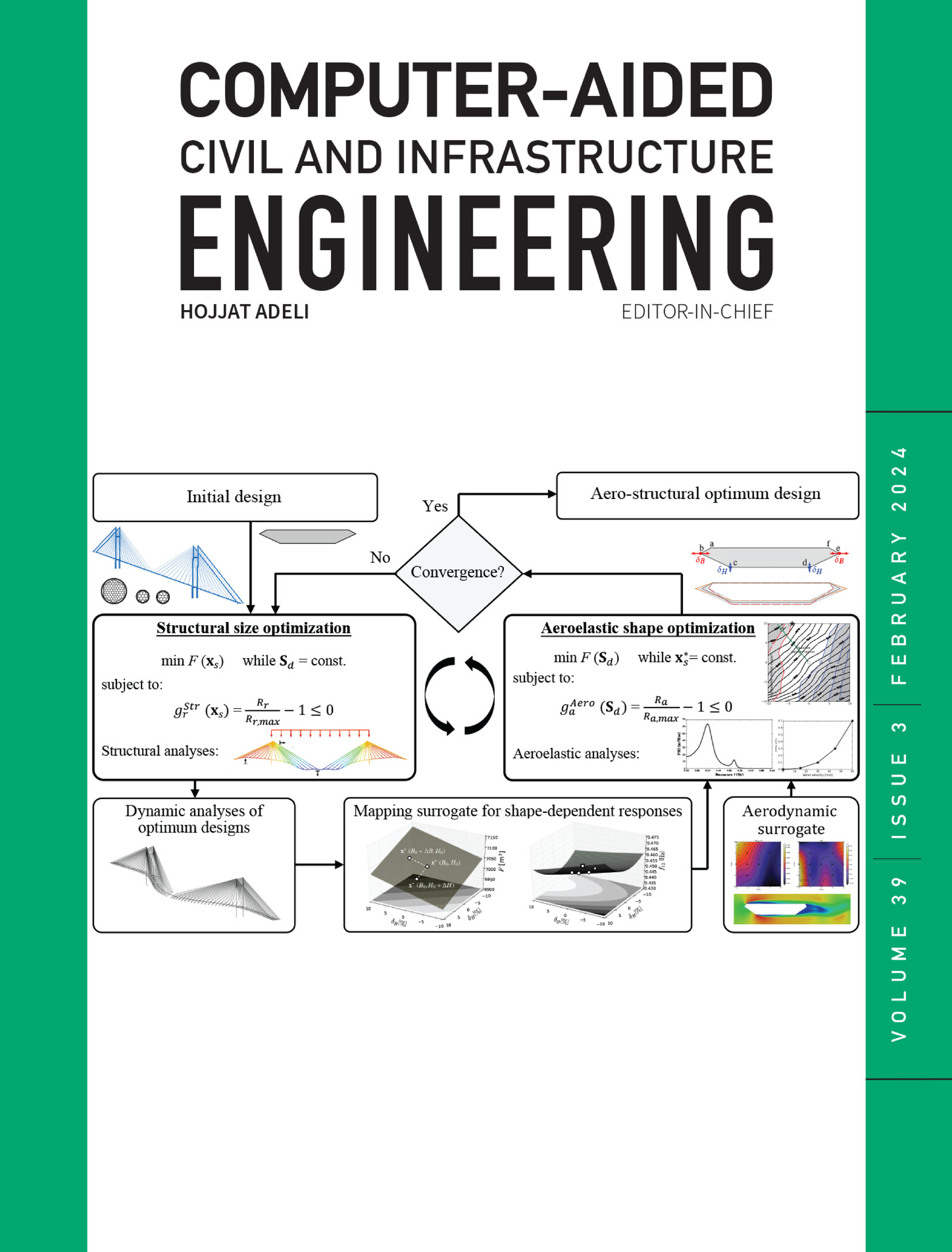A lightweight binocular vision-supported framework for 3D structural dynamic response monitoring
IF 8.5
1区 工程技术
Q1 COMPUTER SCIENCE, INTERDISCIPLINARY APPLICATIONS
引用次数: 0
Abstract
Current three-dimensional (3D) displacement measurement algorithms exhibit practical limitations, such as computational inefficiency, redundant point cloud data storage, reliance on preset targets, and restrictions to unidirectional measurements. This research aims to address computation efficiency and accuracy issues in binocular camera-based 3D structural displacement measurement by proposing a lightweight binocular vision-supported framework for structural 3D dynamic response monitoring. Through the optimization of sub-algorithms and code structures, this framework enhances both measurement accuracy and computational efficiency. The research incorporates a hybrid feature point processing algorithm and a lightweight tracking algorithm, which improve the accuracy of feature point recognition and tracking, enhance the adaptability and flexibility of the monitoring process, and increase tracking efficiency and overall system performance. These improvements make the framework more applicable to various civil engineering scenarios. Experimental validation on a full-scale three-story structure shows that the framework enables effective, target-free, 3D dynamic monitoring. Compared with reference displacement sensors, the framework achieves a relative root mean squared error of 14.6%, closely matching the accuracy of traditional methods that utilize accelerometers. The framework processes 1000 frames at 9.2 frames per second, offering a novel solution for contactless structural dynamic response monitoring in civil engineering applications, such as residential buildings and bridges, within a reasonable distance.一种轻型双目视觉支持的三维结构动态响应监测框架
当前的三维(3D)位移测量算法存在实际局限性,例如计算效率低下、冗余的点云数据存储、对预设目标的依赖以及单向测量的限制。本研究旨在解决基于双目相机的三维结构位移测量的计算效率和精度问题,提出一种轻型双目视觉支持的结构三维动态响应监测框架。该框架通过对子算法和代码结构的优化,提高了测量精度和计算效率。本研究采用混合特征点处理算法和轻量化跟踪算法,提高了特征点识别和跟踪的准确性,增强了监测过程的适应性和灵活性,提高了跟踪效率和系统整体性能。这些改进使框架更适用于各种土木工程场景。在全尺寸三层结构上的实验验证表明,该框架能够实现有效的、无目标的三维动态监测。与参考位移传感器相比,该框架的相对均方根误差为14.6%,与利用加速度计的传统方法的精度非常接近。该框架以每秒9.2帧的速度处理1000帧,为土木工程应用(如住宅建筑和桥梁)在合理距离内的非接触式结构动态响应监测提供了一种新颖的解决方案。
本文章由计算机程序翻译,如有差异,请以英文原文为准。
求助全文
约1分钟内获得全文
求助全文
来源期刊
CiteScore
17.60
自引率
19.80%
发文量
146
审稿时长
1 months
期刊介绍:
Computer-Aided Civil and Infrastructure Engineering stands as a scholarly, peer-reviewed archival journal, serving as a vital link between advancements in computer technology and civil and infrastructure engineering. The journal serves as a distinctive platform for the publication of original articles, spotlighting novel computational techniques and inventive applications of computers. Specifically, it concentrates on recent progress in computer and information technologies, fostering the development and application of emerging computing paradigms.
Encompassing a broad scope, the journal addresses bridge, construction, environmental, highway, geotechnical, structural, transportation, and water resources engineering. It extends its reach to the management of infrastructure systems, covering domains such as highways, bridges, pavements, airports, and utilities. The journal delves into areas like artificial intelligence, cognitive modeling, concurrent engineering, database management, distributed computing, evolutionary computing, fuzzy logic, genetic algorithms, geometric modeling, internet-based technologies, knowledge discovery and engineering, machine learning, mobile computing, multimedia technologies, networking, neural network computing, optimization and search, parallel processing, robotics, smart structures, software engineering, virtual reality, and visualization techniques.

 求助内容:
求助内容: 应助结果提醒方式:
应助结果提醒方式:


